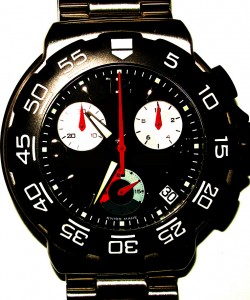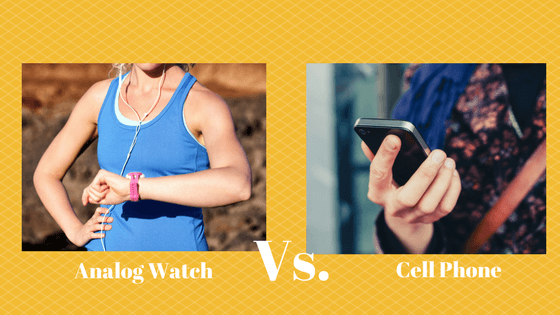(Tip #4 of the series 15 Tips to Support Your Brain for Good Time Management)
I’d been married about six months when my husband told me, “If you ask me what time it is one more time, I’m getting a divorce.” He sounded serious, so I decided that it was time for me to take responsibility for my needing to know the time. You see, I refused to wear a watch.
This was years before I understood my brain’s issue with the executive functioning skill of time management. All I knew at that time was that I was a creative, spontaneous person. I wanted to live in the moment – go with the flow. I saw the watch as restricting my freedom. (Many of my clients nod and smile when I tell this story.)
So, when my husband gave me that ultimatum, did I go out and get a watch? NO! A watch didn’t fit my self-image. Instead I got the cool hot new technology of the moment – a lovely slim pocket calculator that had a digital clock function. Now, I could check the time myself. But did it help me to get to the bus on time?
No. The fundamental problem with time is that you can’t see it. Since I kept the calculator in my pocket or purse it was out of sight and thus time was out of sight. I did not pick the best solution for my time-challenged brain.
I’d say that 99.9% of my time-challenged  ADHD clients arrive not wearing watches. They are quick to point out that their cell phone has a clock function. Then I tell them my calculator story and they realize that their cell phone isn’t the best solution for them either. But getting them to wear a watch is another story…
ADHD clients arrive not wearing watches. They are quick to point out that their cell phone has a clock function. Then I tell them my calculator story and they realize that their cell phone isn’t the best solution for them either. But getting them to wear a watch is another story…
The problem is that wearing watches isn’t “cool.” We need to change that. You need to think of a watch as a fashion statement. What something looks like and feels like is critical for most of the creative time-challenged people.
The solution? Get a watch you want to love wearing so you will wear it! There are some truly awesome and amazing watches made by Tokyo Bay. There are links on my Cool Tools page on my website. Start a fashion trend!
When you wear a watch make sure that it has an analog face versus a digital face. This is critical. Why? Read my Tip # 5 to find out.

